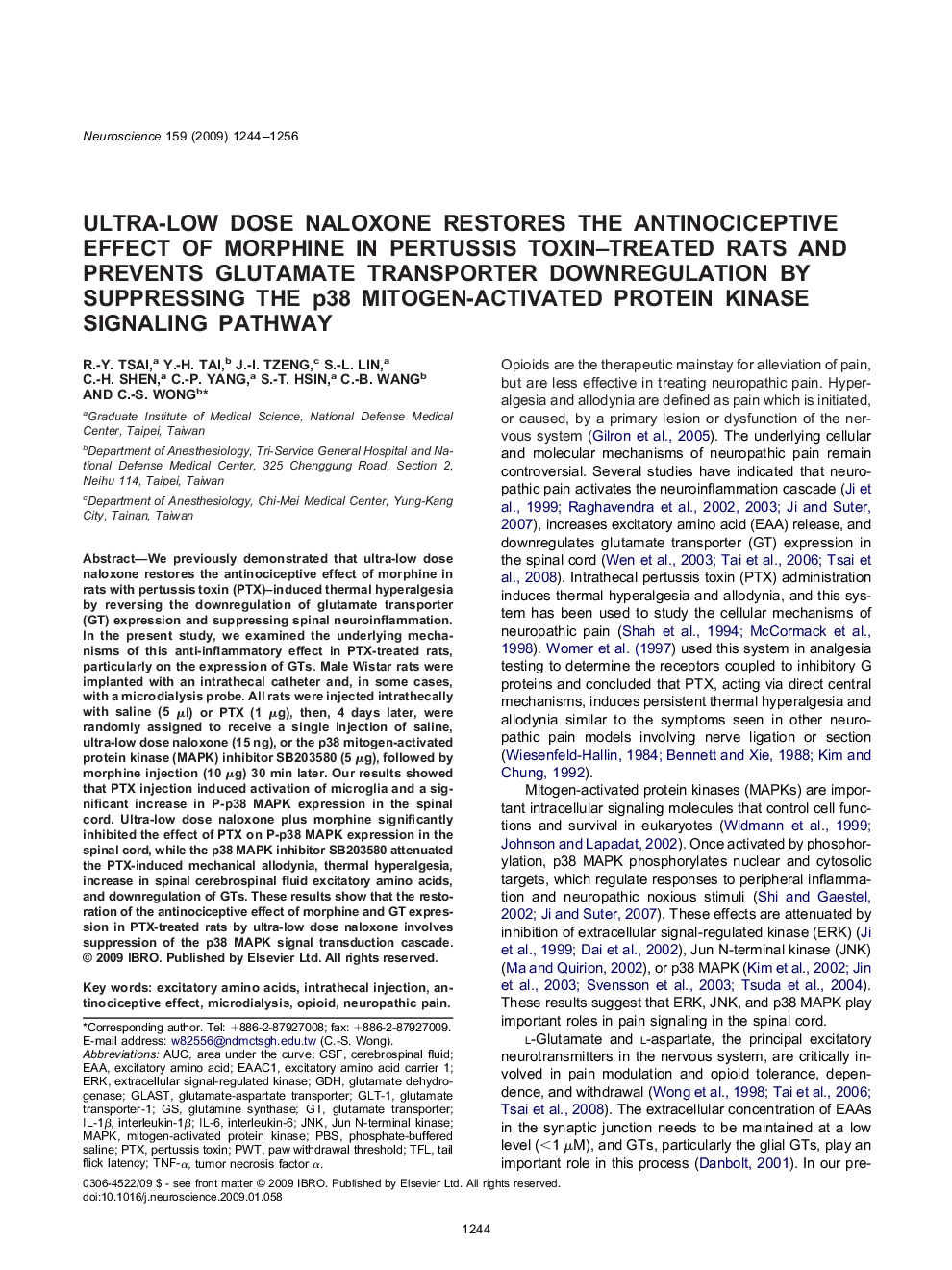| Article ID | Journal | Published Year | Pages | File Type |
|---|---|---|---|---|
| 4339871 | Neuroscience | 2009 | 13 Pages |
We previously demonstrated that ultra-low dose naloxone restores the antinociceptive effect of morphine in rats with pertussis toxin (PTX)–induced thermal hyperalgesia by reversing the downregulation of glutamate transporter (GT) expression and suppressing spinal neuroinflammation. In the present study, we examined the underlying mechanisms of this anti-inflammatory effect in PTX-treated rats, particularly on the expression of GTs. Male Wistar rats were implanted with an intrathecal catheter and, in some cases, with a microdialysis probe. All rats were injected intrathecally with saline (5 μl) or PTX (1 μg), then, 4 days later, were randomly assigned to receive a single injection of saline, ultra-low dose naloxone (15 ng), or the p38 mitogen-activated protein kinase (MAPK) inhibitor SB203580 (5 μg), followed by morphine injection (10 μg) 30 min later. Our results showed that PTX injection induced activation of microglia and a significant increase in P-p38 MAPK expression in the spinal cord. Ultra-low dose naloxone plus morphine significantly inhibited the effect of PTX on P-p38 MAPK expression in the spinal cord, while the p38 MAPK inhibitor SB203580 attenuated the PTX-induced mechanical allodynia, thermal hyperalgesia, increase in spinal cerebrospinal fluid excitatory amino acids, and downregulation of GTs. These results show that the restoration of the antinociceptive effect of morphine and GT expression in PTX-treated rats by ultra-low dose naloxone involves suppression of the p38 MAPK signal transduction cascade.
